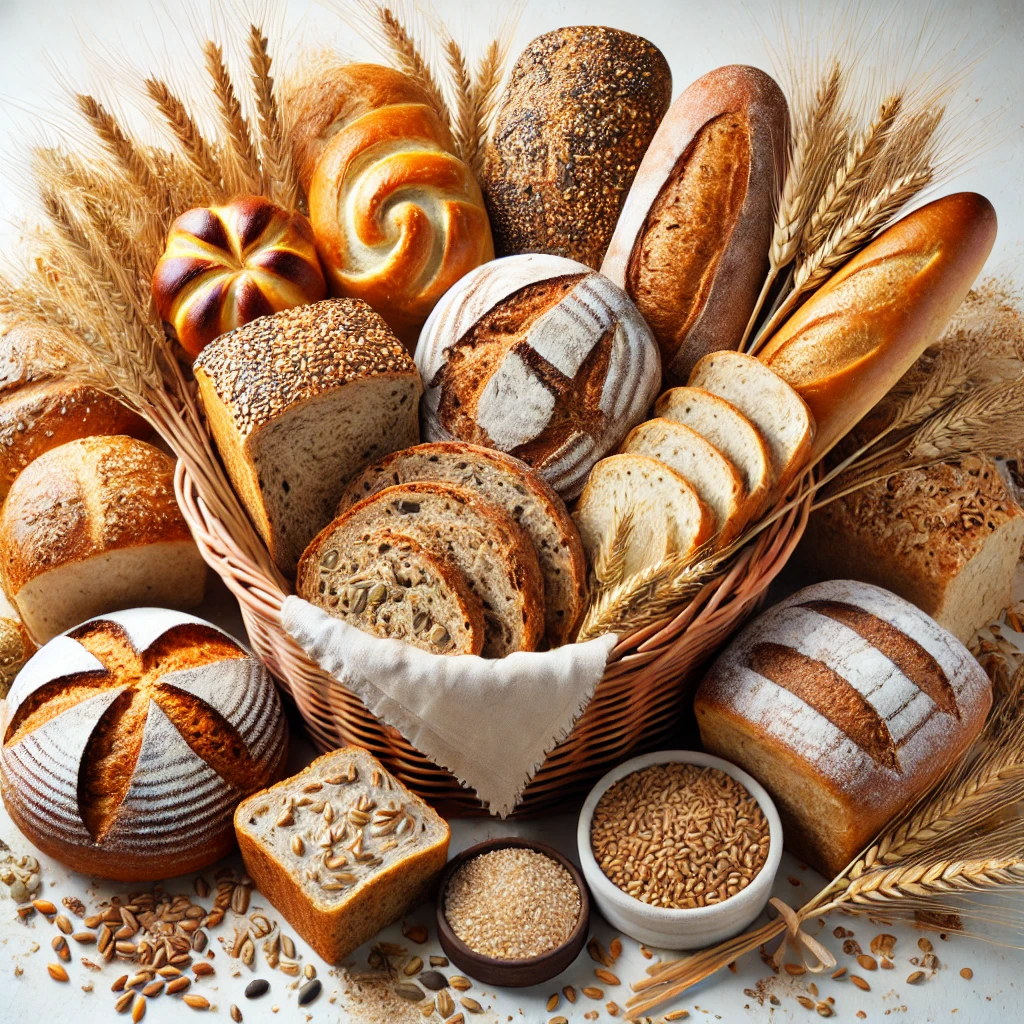Sprouted vs. Whole Wheat — Which Bread is Healthier?
Key Takeaways:
- Sprouted bread is nutrient-rich due to its germination process, making it a dietitian favorite.
- Whole-wheat bread is made from whole wheat berries, while whole-grain bread may include a variety of grains.
- Sprouted bread nutrients are often more bioavailable, which may benefit individuals with non-celiac gluten sensitivities.
Finding the Healthiest Bread
When searching for healthy bread, choosing between sprouted wheat, whole wheat, or whole grain can be confusing. Understanding their differences helps in making the healthiest choice. According to registered dietitian Brookell White, MS, RD, “At least half of your grains should be whole grains. And the more whole grains, the better! They provide essential nutrients and promote overall health.”
What to Look For:
- Nutrient content and fiber levels
- Use of 100% whole grains
- Ingredients list for whole grains as the primary ingredient
What is Sprouted Wheat Bread?
Sprouted wheat bread is made using a germinated wheat kernel, meaning the grain has started to sprout. This process enhances nutrient absorption by breaking down proteins and carbohydrates. Sprouted bread can be produced using two main methods:
- Dry Method: Grains are sprouted, dried, and then milled into flour.
- Wet Method: Sprouted grains are mashed into a puree, often used for flourless products like tortillas.
Health Benefits of Sprouted Wheat Bread
- Improved Nutrient Absorption: Sprouting activates enzymes, enhancing nutrient bioavailability.
- Digestibility: Sprouted grains may be easier for those with non-celiac gluten sensitivities.
- Lower Phytates: The sprouting process can reduce phytate levels, increasing mineral absorption.
Recommended Sprouted Breads:
- Ezekiel 4:9 Original Sprouted Bread
- Dave’s Killer Bread Sprouted Whole Grains
- Alvarado St. Bakery Seriously Sprouted Bread
Whole-Wheat and Whole-Grain Bread
Whole-wheat bread is made from ground wheat berries, retaining the bran, germ, and endosperm. Whole-grain bread can be made from a mix of grains like oats, rye, barley, and more. To ensure maximum nutrients, look for “100% whole-wheat” or “100% whole-grain” on the label.
Production Process:
- Milling whole grains into flour
- Combining with water, yeast, and salt
- Baking after kneading and proofing
Nutrition Highlights:
Whole-wheat bread is rich in fiber, protein, and micronutrients like B vitamins, vitamin E, iron, and magnesium.
Tasty Whole-Grain Breads:
- Opt for brands with the “100% Whole Grain Stamp”
- Experiment with toasting whole-grain bread with avocado or nut butter
Nutritional Benefits Comparison
While the exact nutrient breakdown varies, whole-grain flours typically offer:
- 13g protein per 100g
- 72g carbohydrates
- 11g fiber
- Essential vitamins and minerals
Which Bread is Best for Your Health?
Both sprouted and whole-wheat breads provide substantial health benefits. Sprouted bread’s nutrient-rich profile makes it a strong contender, especially for those looking to maximize nutrient absorption. However, whole-wheat and whole-grain breads are also excellent options for a balanced diet.
Quick Tip:
Next time you shop, opt for sprouted whole wheat, 100% whole-wheat, or 100% whole-grain bread to elevate your nutrition game.
The Bottom Line
Switching to sprouted or whole-grain bread is a small but impactful change. By making this shift, you’ll not only boost your nutrient intake but also support your health goals. Track your macros and nutrition progress with the SlyAcademy app for continued success!







